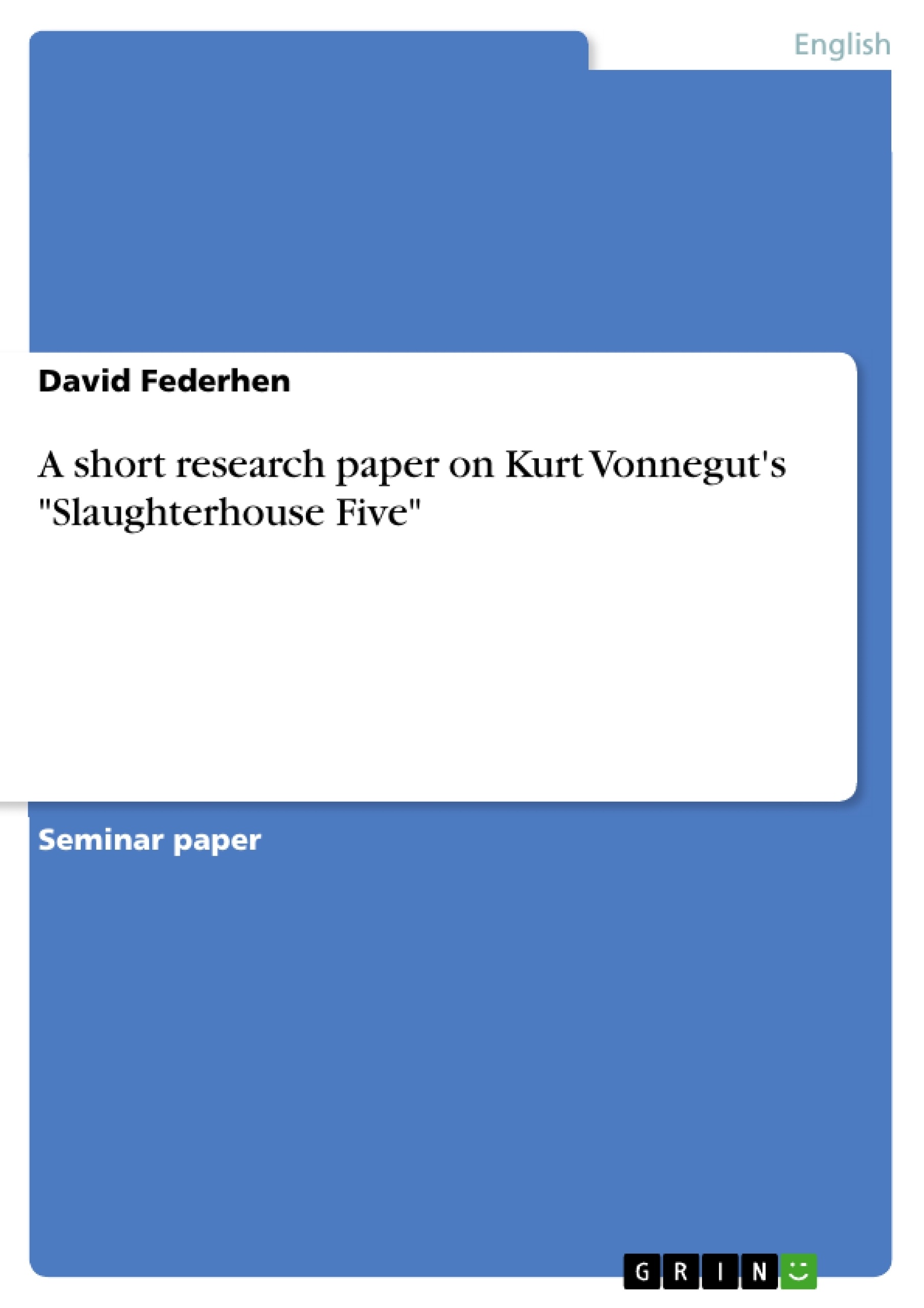Introduction
Kurt Vonnegut, Jr. is considered one of the greatest American authors ever. He wrote about 30 novels, an uncounted number of short-stories and a few essays and plays. His most successful novel, Slaughterhouse-Five or The Childrens′ Crusade, a Duty Dance with Death, was his sixth book and published in 1969.
This research paper will focus on the connection between Billy Pilgrim, the main character of Slaughterhouse-Five, and the life of Kurt Vonnegut. Furthermore, it will make use of this connection in order to suggest why Kurt Vonnegut wrote this book.
Pilgrim, who is an American World War II veteran and survived the allied air raid on Dresden in early 1945, strikes the reader as a very eccentric person. He believes that he "has come unstuck in time" (Vonnegut, 1991, p.23) and time travels to his childhood, to his wedding, to the Battle of the Bulge and to the air raid. But not only that he has lost control over the temporal aspects of his life, he furthermore believes that he has been kidnapped by aliens from the planet Tralfamadore and taken to their world as an exhibit in a terrarium.
In order to point out the close relationship between the author and the main character I will subdivide this paper into several sections, shortly giving information about the author′s biography and providing a quick summary of Slaughterhouse-Five.
This information has to be considered and related in order to understand Vonnegut′s motivation for writing this novel. It is vital to realize that Pilgrim is Vonnegut and that whatever Pilgrim feels is what Vonnegut experienced in his life.
Inhaltsverzeichnis (Table of Contents)
- Introduction
- Biography
- Summary of Slaughterhouse-Five
- The Connection between Vonnegut and Pilgrim
- Vonnegut's Intentions
Zielsetzung und Themenschwerpunkte (Objectives and Key Themes)
This research paper aims to explore the connection between Billy Pilgrim, the main character in Kurt Vonnegut's novel Slaughterhouse-Five, and the author's own life. It seeks to utilize this connection to suggest the motivations behind Vonnegut's writing of the book.
- The impact of war on individuals and society
- The nature of time and the human experience of it
- The search for meaning and purpose in a chaotic world
- The relationship between art and reality
- The exploration of themes of trauma, memory, and identity
Zusammenfassung der Kapitel (Chapter Summaries)
The first chapter of Slaughterhouse-Five serves as an introduction to the narrative and will be discussed in the context of Vonnegut's intentions. The main plot of the novel begins in chapter two, where we encounter Billy Pilgrim, a man who has "come unstuck in time." The narrative follows the chaotic timeline of Pilgrim's life, starting with his childhood in Ilium, New York. We witness his enlistment in the Army during World War II, his capture by the Germans, and his experience of the Allied air raid on Dresden. This event serves as a pivotal turning point in Pilgrim's life, leading him to experience a disconnect from linear time.
The chapters that follow delve further into Pilgrim's life, exploring his experiences as a prisoner of war in Dresden, his return to Ilium, his marriage to Valencia, and his subsequent encounters with the Tralfamadorians, alien beings who teach him a different perspective on time and existence. We witness his struggles with trauma, his attempts to navigate a chaotic and unpredictable reality, and his grappling with the existential questions of life and death.
Schlüsselwörter (Keywords)
The central keywords in this research paper are Kurt Vonnegut, Slaughterhouse-Five, Billy Pilgrim, Dresden, World War II, time travel, Tralfamadorians, trauma, memory, and identity. These terms represent the key themes and concepts explored in Vonnegut's novel, highlighting the impact of war on individuals, the nature of time, the search for meaning, and the relationship between art and reality.
- Quote paper
- David Federhen (Author), 2002, A short research paper on Kurt Vonnegut's "Slaughterhouse Five", Munich, GRIN Verlag, https://www.hausarbeiten.de/document/12996


